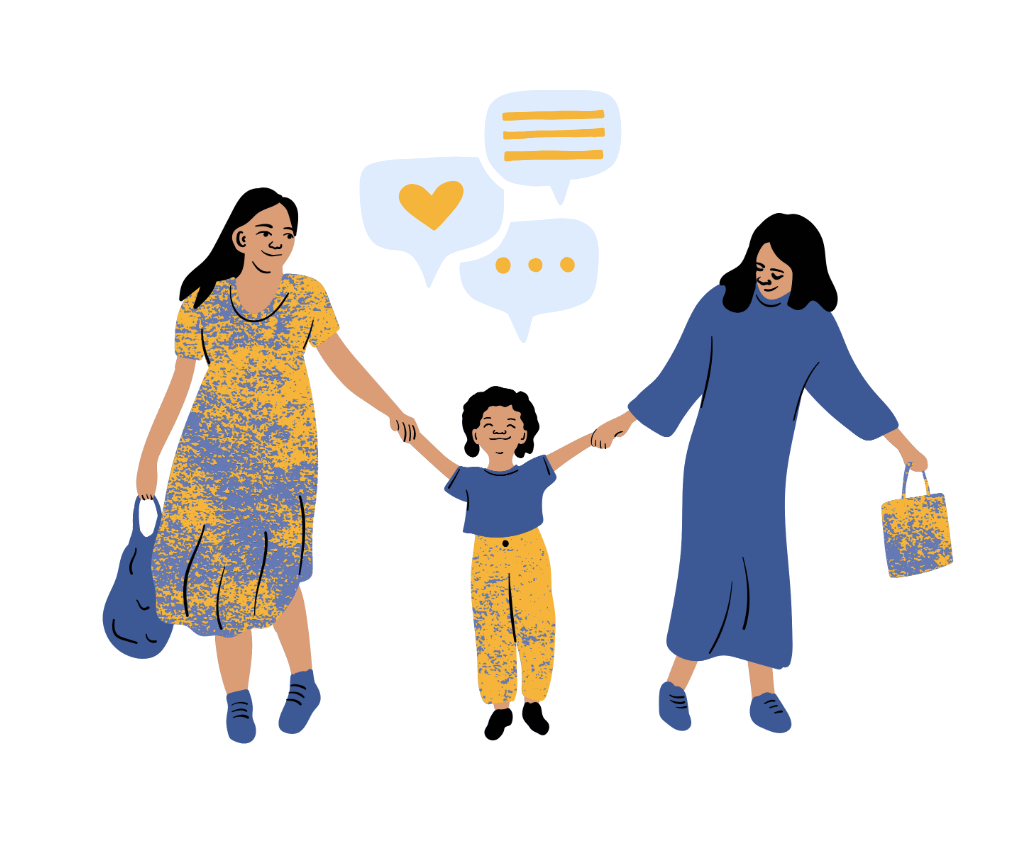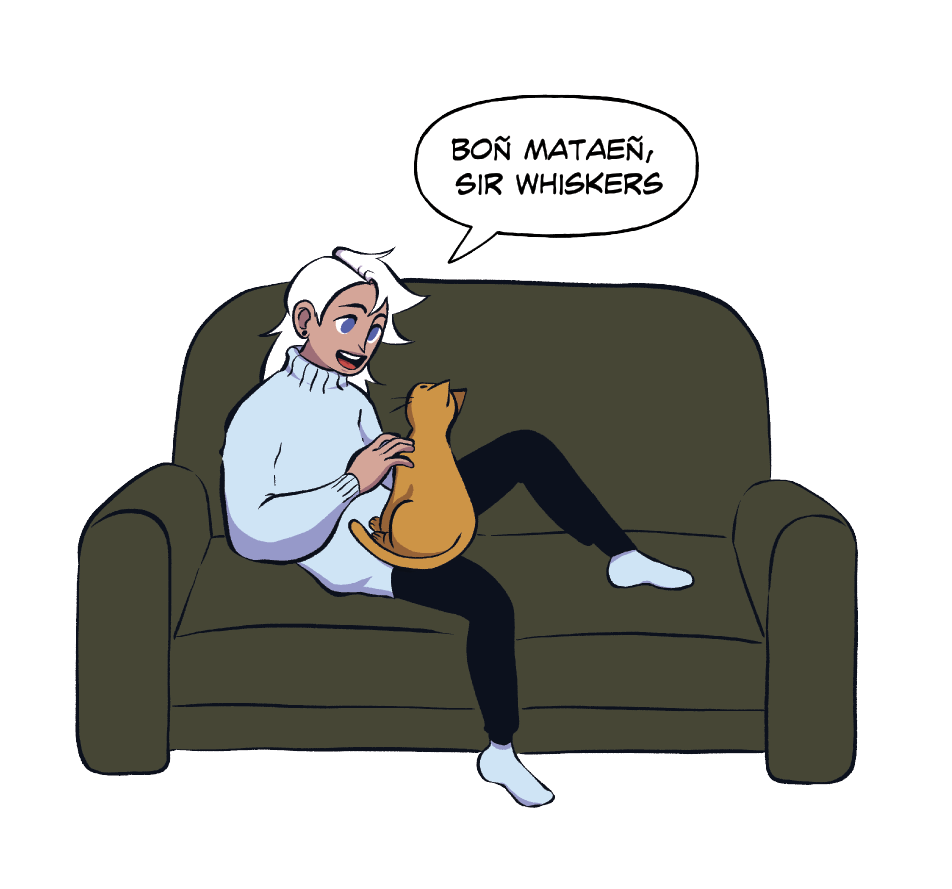Our Language Revitalization Pathway
At the Louis Riel Institute, we are progressing along the pathway of language revitalization. Through the content of this page, we share the heart of our Métis Languages Department's program, key facts about language revitalization, and insights into initiatives.
Michif is a term currently used to encompass three traditional and uniquely Métis languages: French Michif, Northern Michif, and Southern Michif.
French Michif describes the variety of French that has been influenced by Algonquian languages which blend the Algonquian structures and sounds with French ones, resulting in a unique linguistic variety spoken by Métis people.
Northern Michif describes the variety of Cree spoken by Métis people that utilizes some French word borrowings. Historically, this variety has been spoken in north-western Saskatchewan and northern Alberta, with minimal presence in Manitoba, though remains unique to the Métis people.
Southern Michif describes a mixed language, often simply known as having French-origin nouns and Cree-origin verbs, though it is more grammatically complex. English borrowings have more recently entered the language, which is reflective of its historical influences and its origin in multilingual Métis communities.
All these languages may have variations across them, largely because of regional differences. We acknowledge that all ways of speaking Michif languages are equally important and valid since Michif is so intrinsically tied to our identity as the Red River Métis.
In the context of language revitalization, a speaker refers to an individual who has spoken a given language since their infancy, rather than learning a language in childhood or adulthood. In other words, they have learned and heard one or multiple languages as their primary method of communication since their birth. However, being a speaker does not necessarily mean you are a fully proficient or fluent speaker, especially if the dominant language of your everyday world has shifted.

A silent speaker is an individual who holds an immense understanding of a given language, but is no longer or just not able to speak it in a large capacity. This can be the result from many social and environmental impacts including attending residential school or day school, imposition of shame, as well as the lack of opportunity to speak their language, despite growing up surrounded by and immersed in it.
Nonetheless, silent speakers are important in language revitalization processes as they have stored knowledge of their language which may make it easier for them to learn to speak the language again should they so choose. Their life stories of having been around the language are important for documentation as well.

A language learner in the context of language revitalization is an individual dedicated to acquiring proficiency in a native or endangered language. These learners actively engage with language materials, lessons, and immersion experiences to not only grasp vocabulary and grammar but also to embody the cultural nuances embedded in the language.
Learners play a crucial role in preserving linguistic heritage, contributing to the continuity of cultural traditions, and passing down a vital piece of their community's identity to future generations. In essence, a language learner in the realm of revitalization is a passionate steward of cultural resilience and linguistic diversity.
What is Conversational Proficiency?
Conversational proficiency is the ability to speak a language proficiently enough that the learner or speaker is comfortable in everyday communication. Conversational proficient speakers are not fluent and may sound different than fluent speakers. It's about being able to engage in everyday conversations, share stories, and connect on a personal level with others using the language. In the context of language learning or revitalization, achieving conversational proficiency signifies not just mastering words but embodying the living essence of a language, fostering a sense of community and cultural continuity through spoken words.
In a 2022 survey, less than 30 Southern Michif speakers and less than ten French Michif speakers were reported among participating Red River Métis Citizens. Southern Michif is critically endangered, with few remaining proficient speakers, most in Elder ages. Factors like residential schools, Sixties Scoop, and colonial tactics have limited speakers involved in revitalization efforts.
Why is there a focus on revitalizing Southern Michif?
The emphasis on revitalizing Southern Michif is influenced by several factors that are critical to the success of preserving an endangered language.
- Firstly, the Southern Michif dialect currently has a larger number of identified speakers compared to other variants, making it a strategic starting point for revitalization efforts.
- Secondly, funding constraints are an inherent challenge in language revitalization, and focusing efforts on one language variant can make existing resources go further. Our team can work collaboratively, covering more ground. We work closely with linguistic experts in the Michif and endangered Indigenous language community, leveraging their invaluable knowledge to avoid reinventing the wheel. Recognizing that teaching and documentation are learned skills, we prioritize training our Mentor-Apprentice teams in language acquisition methods, equipment, and efficiency needed to make a lasting impact.
- Additionally, the active involvement of willing speakers is pivotal. Southern Michif benefits from several speakers who are actively engaged and committed to preserving their linguistic heritage. Their participation is fundamental to the success of any revitalization program.
While the initial focus may be on Southern Michif, the ultimate goal is to create a sustainable model of how to preserve and teach our unique Métis Languages that can be adapted for other variants. The journey toward revitalization is a collaborative effort that involves respect for linguistic diversity, community engagement, and strategic allocation of resources.
Language Learning at Home
How do I start learning Michif?
If you are interested in learning the language, and using it in your daily life but aren't too sure where to begin, we encourage you to:
- Read through the Family Language Planning Document for suggestions on where in your life you can start using language.
- Start lesson-based learning independently, as a club, or together with people from your household. We recommend michif.org for Southern Michif.
- If you choose another language variety or resource, review the learning resource list.
Remember, any use of language is a great place to start!

Is there more than one way to say something in Michif?
Wii! Yes! Just as in English there can be more than one way to communicate your ideas, you may encounter more than one way to express something in Michif.
For example, Southern Michif is a unique blend of Cree and French, and is known to have regional differences. Also, it is originally an oral language, it wasn't written down. As revitalization efforts have advanced, multiple language collections and spelling approaches have emerged. The Louis Riel Institute is excited to be making progress on a double vowel spelling system to be used and shared. There are many variations of Michif, and we celebrate them all!
Which variation of Michif should I use?
We encourage you to use language that you can learn together with the people of your household. This can be influenced by your chosen learning resource, or by the variant your family may have spoken in the past. For example, if you have a loved one who remembers French Michif, try practicing together.
How can I be involved?
As a Red River Métis citizen, or someone from our extended communities, we invite you to join our pathway! Here is how:
Dedicate time to actively learning and speaking Michif. Utilize language resources, create group learning in your household or community, and participate in community outreach events to build your proficiency. If linguistics is your passion, consider taking a Michif class in a post-secondary setting.
One of the key attributes of being a language learner is bravery. Be brave to speak the language aloud to yourself, and to the people around you. Teach others the importance of language as it is woven into our unique cultural heritage. Have the bravery to claim the language as a part of your Red River Métis identity journey.
Incorporate Michif into your household's daily routine. Use the language when communicating with family, friends, and community members. This helps normalize its usage and creates a sense of linguistic community. See: My Southern Michif Introductions.
Amateur Documentation: If you know a Speaker, a Silent Speaker, or someone who doesn't speak, but remembers people speaking a Metis Language in their lives. Document and Record: Collaborate with language preservation projects to document and record Michif conversations, stories, and cultural practices. This contributes to creating valuable resources for future learners. Share the documentations with our team at LRI.
Documenting Workbook coming soon.
Actively participate in Métis cultural events and celebrations where Michif language and traditions are highlighted. These events provide a platform for language exposure and community engagement.
Stay informed and connected! Get notified of upcoming community events and new resources:
- Join the Louis Riel Institute email list
- Follow Métis Languages on Facebook and X / Twitter
- Follow the Michif language Facebook group (not LRI affiliated)
